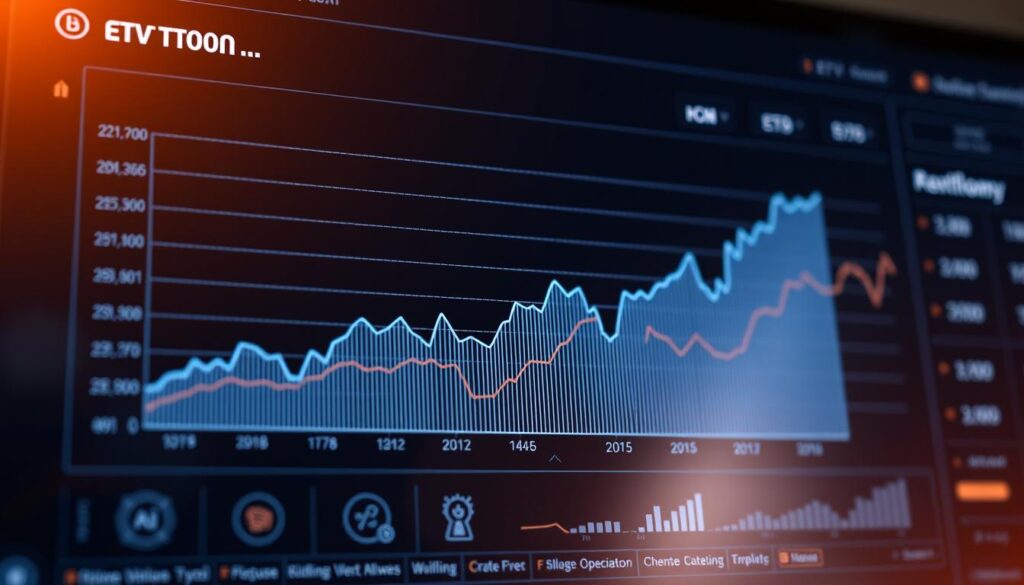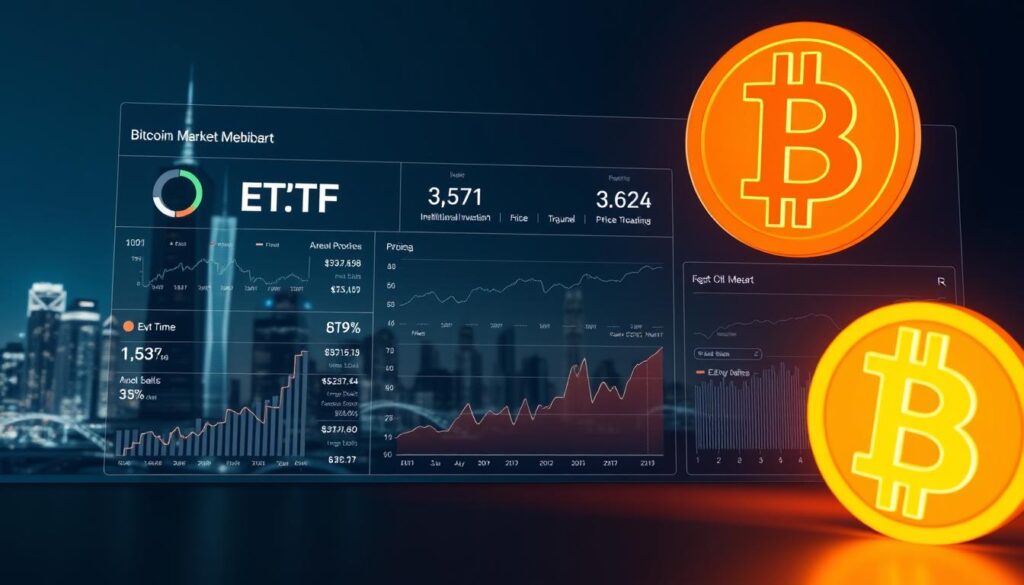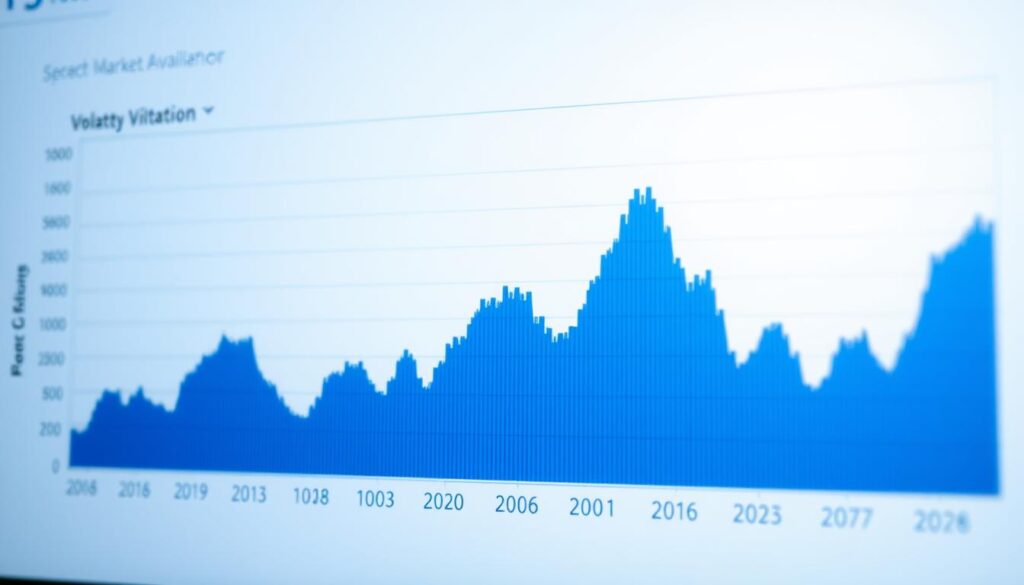Now Reading: The Impact of Market Momentum Cryptocurrency Institutional Buying
- 01
The Impact of Market Momentum Cryptocurrency Institutional Buying
The Impact of Market Momentum Cryptocurrency Institutional Buying

The digital asset landscape has reached a new era. In 2025, the total value of all crypto assets surged past the $4 trillion mark for the first time. This milestone signals a period of major growth and maturity for the entire industry.
This progress is largely fueled by a powerful new force. Major financial players are now deeply involved, reshaping the digital economy. Their activity creates a powerful wave of confidence and capital inflow.
Bitcoin’s rise to an all-time high above $126,000 underscores this shift. It is increasingly seen as a solid store of value by serious investors. This trend is part of a broader pattern of acceptance.
As recent analysis shows, large-scale transfers now dominate activity in regions like North America. This data confirms that professional investment is a defining characteristic of the current cycle. The convergence of clearer rules and better technology has set the stage for this unprecedented movement.
Our examination will explore how these buying patterns create and sustain powerful trends across different assets. We will provide data-driven insights into this pivotal moment for digital finance.
Understanding Institutional Crypto Buying
Gone are the days when digital assets were solely the domain of individual retail traders. Today, a new wave of participants is driving profound change.
Overview of Institutional Participation in Crypto Markets
Institutional involvement means large entities like BlackRock, Fidelity, and JPMorgan are now active. These firms offer crypto products to their vast customer bases.
This shift is clear in the data. Over $175 billion sits in Bitcoin and Ethereum exchange-traded products. That is a massive 169% increase from just one year ago.
BlackRock’s iShares Bitcoin Trust (IBIT) became the most traded launch of its kind. Publicly traded companies and these products now control around 10% of the total supply of major assets.
The Role of Institutional Investors in Shaping Trends
These large-scale investors create sustained demand. Their buying patterns can reduce available supply and establish price floors.
This activity provides a layer of market legitimacy. It attracts more capital from pension funds and endowments.
A clearer regulatory environment has enabled this confident entry. This cycle of adoption and price appreciation appears self-reinforcing.
Key Drivers Behind Market Momentum in Crypto
Behind the surface-level price action lies a complex ecosystem of infrastructure improvements and usage data. These fundamental factors provide the basis for sustained upward movement across digital assets.
Data-Driven Insights and Volume Expansion
Blockchain networks now handle over 3,400 transactions every second. This represents more than 100 times the capacity from just five years ago.
Stablecoins have emerged as critical infrastructure. They power $46 trillion in annual transactions, with $9 trillion representing organic economic activity.
Monthly adjusted stablecoin volume reached approximately $1.25 trillion in September 2025. This growth indicates real-world usage beyond speculative trading.
Technical Patterns and Price Movements
Recognizable chart formations signal institutional interest. Patterns like cup-and-handle and ascending trendlines often precede sustained price appreciation.
Trading volume spikes of 103% or more confirm genuine market engagement. These indicators validate the sustainability of price movements.
The concept of real economic value provides a meaningful basis for analysis. Platforms like Hyperliquid and Solana account for 53% of revenue-generating activity today.
Market momentum cryptocurrency institutional buying: Trend Analysis
Analyzing the flow of capital provides a clear window into the current phase of digital asset growth. This section examines specific data points that quantify the relationship between large-scale participation and sustained price appreciation.
Recent Inflows and Trading Volume Indicators
Recent data shows exceptionally strong appetite for exposure. Net ETF inflows hit $2.2 billion in early October, the second-largest weekly inflow ever recorded.
This surge coincided with Bitcoin’s high-volume breakout above the $120,000 level. The correlation provides concrete evidence that spot ETF demand creates significant upward pressure.
Increased trading volume during price advances validates that participants are actively deploying capital. It confirms genuine engagement on a solid basis.

Comparative Analysis with Historical Data
History offers a compelling precedent. A similar trend occurred during the same period last year, preceding Bitcoin gains exceeding 50%.
The fourth quarter has consistently been a strong period for performance. Current accumulation patterns suggest 2025 may follow this seasonal basis.
Evidence indicates accumulation extends beyond large entities to mid-sized and smaller holders. This broad investor base supports more sustainable trend continuation.
Futures market data and sentiment indicators align with spot market activity. This points to long-term positioning on a fundamental basis.
| Year | Q4 Price Change | Key Weekly Inflow Event | Primary Driver |
|---|---|---|---|
| 2024 | +52% | Major ETF Approval | Regulatory Clarity |
| 2025 | Ongoing | $2.2B Inflow (Oct) | Sustained Spot ETF Demand |
| 2023 | +28% | Futures Market Rally | Macroeconomic Sentiment |
| 2022 | -15% | Minimal Inflows | Risk-Off Environment |
Institutional Adoption: Zcash, BNB, and Emerging Tokens
The adoption wave extends beyond mainstream assets to include specialized tokens with unique value propositions. These assets demonstrate how targeted capital deployment creates distinct opportunities.

Zcash’s Technical Breakout and Institutional Inflows
Zcash surged 13.72% following Grayscale’s new investment vehicle. This mirrors the pattern seen during previous major product launches.
The asset formed a cup-and-handle pattern with resistance near $295. A breakout could push the price toward $320-$340 based on technical projections.
Volume expansion confirms genuine investor conviction. This distinguishes real demand from temporary speculation.
BNB’s Rebound and Upcoming Resistance Levels
BNB gained 1.34% while extending its monthly uptrend beyond 10%. The token rebounded from a strong support zone between $1,040 and $1,080.
Reduced regulatory uncertainty after recent developments boosted market optimism. BNB trades above key averages, approaching resistance near $1,143.
Breakout potential exists toward $1,376 based on historical patterns. Specific entities have strengthened this trend through capital allocation.
| Asset | 24-Hour Gain | Key Resistance | Next Target |
|---|---|---|---|
| Zcash (ZEC) | 13.72% | $295 | $320-$340 |
| BNB | 1.34% | $1,143 | $1,376 |
| Virtuals Protocol | 12.89% | $0.88 | $1.18-$1.40 |
Virtuals Protocol jumped 12.89% with volume spiking 103%. This validates its breakout from accumulation, showing momentum extends to smaller assets.
Macroeconomic and Technical Indicators in the Crypto Market
Current economic conditions and technical signals are creating a complex environment for digital assets. Both fundamental and chart-based indicators provide crucial information for investment decision-making.

ETF Inflows, Profit-Taking, and Market Volatility
Recent $2.2 billion ETF inflows created significant upward price pressure. This reduced available supply in the spot market, establishing a fundamental imbalance.
Profit-taking emerged after Bitcoin’s strong October start. The rally stalled beneath critical resistance, showing volatility persists even during accumulation phases.
Macroeconomic headwinds include rising inflation expectations. The New York Fed survey shows 3.4% one-year-ahead inflation, the highest in 3.5 years.
Dollar strength in recent days placed short-term pressure on assets. A stronger dollar typically reduces demand for alternative stores of value.
Influence of Moving Averages and Support/Resistance Levels
Bitcoin attempts to hold support around $120,300. It faces strong resistance near $122,000, creating critical decision points.
A high-volume breakout above $122,000 could initiate a new upward wave. The first target would be $125,500, potentially extending to $130,000-$135,000.
The downside scenario suggests $119,000 as critical support if $120,300 fails. Loss of this level could accelerate selling toward $114,000-$116,000.
The Stochastic RSI shows weakening short-term momentum. It’s sloping downward from overbought territory, making support levels increasingly important.
| Level Type | Price Point | Significance |
|---|---|---|
| Strong Resistance | $122,000 | Breakout trigger for upward movement |
| Current Support | $120,300 | Critical holding level for bulls |
| Secondary Support | $119,000 | Accelerated selling if broken |
| First Upside Target | $125,500 | Initial objective after breakout |
Advances in Blockchain Infrastructure and Digital Assets
Foundational improvements in network infrastructure are unlocking unprecedented utility for digital assets. This technical progress creates a solid basis for sustained growth and diverse activity.
Scalability and cost efficiency have reached new heights. Blockchains now process over 3,400 transactions per second.
This is a 100-fold increase from five years ago. Average costs on Layer 2 networks have plunged to less than one cent.

Expansion of Stablecoin Use and Network Scalability
Stablecoins are critical infrastructure for global crypto markets. They power an astounding $46 trillion in annual transaction value.
The total supply now exceeds $300 billion. Tether and USDC dominate 87% of this supply.
These assets hold over $150 billion in U.S. Treasuries. This makes them a major financial force.
Integration of DePIN, AI, and Decentralized Identity Solutions
New categories like DePIN (Decentralized Physical Infrastructure) are emerging. The Helium network, for example, provides 5G coverage to 1.4 million users.
Decentralized identity solutions have verified over 17 million people. This provides crucial “proof of human” in an age of AI.
Gartner estimates the AI agent economy could hit $30 trillion by 2030. Blockchain protocols offer payment rails for these agents.
Decentralized exchanges for perpetual futures are processing trillions in trades. They generate massive revenue, showing advanced finance is moving onchain.
| Category | Key Metric | Scale / Value |
|---|---|---|
| Stablecoins | Annual Transaction Value | $46 Trillion |
| Network Scalability | Transactions Per Second | >3,400 |
| Tokenized RWAs | Total Market Size | $30 Billion |
| DePIN (Projected) | Market Size by 2028 | $3.5 Trillion |
These advances create a powerful foundation. They support complex activity and attract capital on a long-term basis.
Integrating Institutional Strategies with Crypto Trading
Professional money managers are now blending digital assets into their standard investment playbooks. This shift moves beyond simple speculation toward strategic, long-term allocation.
The goal is sustained value creation, not quick profits. This disciplined approach is a key driver of the current trend.
Spot ETF Trends and Institutional Allocation Approaches
Exchange-traded products now hold over $175 billion in assets. This is a massive 169% jump from just one year ago.
A recent $2.2 billion net inflow was the second-largest of all time. It highlights a strong preference for spot exposure.
This method offers regulatory clarity and fits easily into existing systems. It provides a solid basis for portfolio building.
Capital flows from a wide range of holders, from large firms to smaller investors. This broad support helps make the upward trend more durable.
Historical data shows the fourth quarter is often strong for performance. A similar pattern last year led to gains over 50%.
For deeper insights, consider analyzing crypto market trends in more detail. This activity is largely separate from speculative futures trading.
It signals real-world use and strong product fit. This new phase points to a mature investment environment.
Conclusion
Seventeen years after Bitcoin’s creation, the industry has transformed from speculative curiosity to mainstream financial infrastructure. The $4 trillion market cap milestone reached for the first time in 2025 signals this profound shift.
Bitcoin’s record above $126,000 demonstrates how professional investment has reshaped the landscape. Over $175 billion now sits in exchange-traded products, establishing reliable channels for capital flows.
Technical foundations support this growth. Blockchains process thousands of transactions per second while stablecoins power trillions in annual activity. Regulatory clarity has reduced previous uncertainty, enabling confident participation.
This institutional adoption creates a sustainable basis for long-term value. While short-term volatility persists, the structural changes position digital assets as permanent components of global finance.















